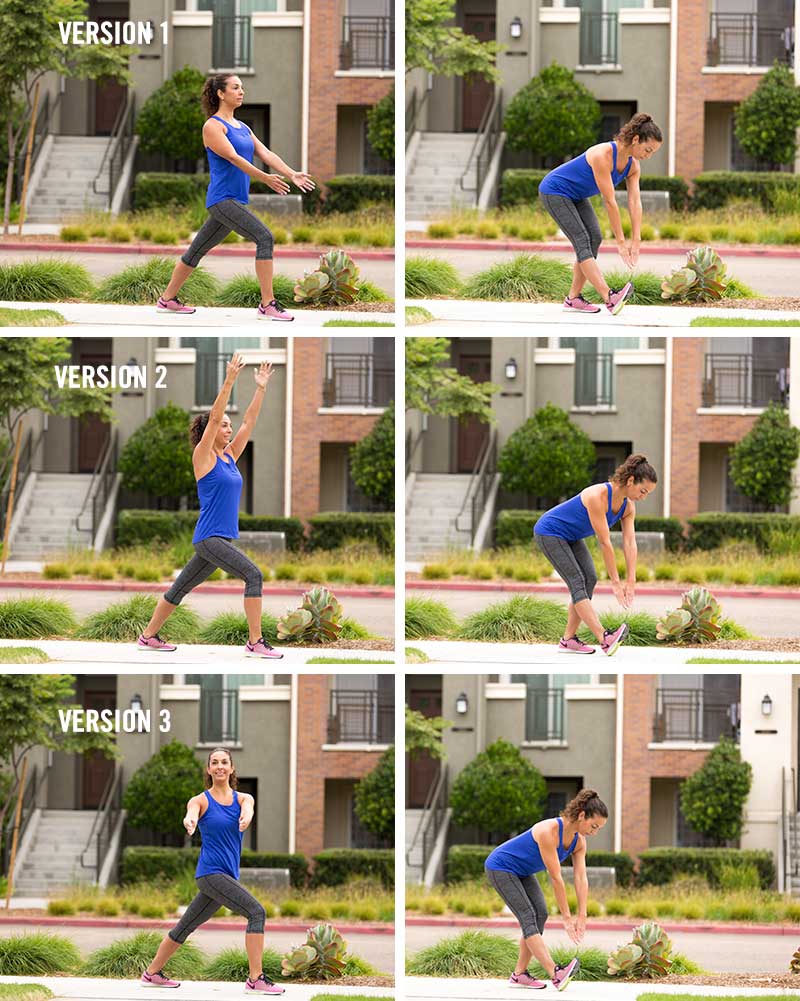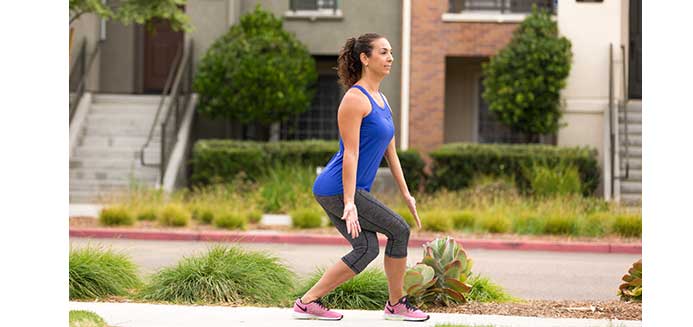For too many reasons to list, running is an amazing exercise. However, also for a multitude of reasons, running can lead to injury (ranging from annoying to serious). Shin splints, knee pain, low-back pain, plantar fasciitis—if you run, you know these all too well.
If your plan is to get hurt, the easiest way to achieve that is to skip your warm-up. Most runners know this and understand the importance of a warm-up. But some warm-up routines are so lengthy that it either exhausts you before you start your run or leaves very little time for an actual workout. Like skipping the warm-up entirely, too much warm up is also far from effective.
In conducting some research on what you should do before you run, I noticed that many articles provide one of two methods: 1) Lie on the ground, complete stretches and muscle activation exercises, and then stand up and start your run; or 2) Start with a walk or slow jog and progress to your running pace. Both of these plans have merit, but neither gets the job done.
Your warm-up (or movement prep) should always mimic your workout. Exercises performed in the prone or supine position are rather distant from running. Ideally, as someone once said, “you should not be able to tell when the warm-up ends and the exercise begins.” I cannot take credit for that quote, but I do suggest applying this thought process to all exercise sessions. Thus, complete the exercises that look nothing like running first. Foam rolling, kneeling stretches, glute bridges, plank variations, prone calf stretches or select yoga poses can definitely help prepare you for a run, but you should finish your warm-up with exercises that are most like running.
Your warm-up should address individual needs, which a light jog does not accomplish.
Furthermore, the process key to any warm-up is to mobilize first and then stabilize. That is, “stretch” the muscles and joints prior to activating them. The end goal is to fire the neuromuscular system, because that is what actually drives movement.
Part I – The Essential Mobility/Stability Runner’s Circuit
1. Forward Lunge to Hamstring Stretch

Start with feet hip-width apart. Lunge forward on the right leg and reach both hands just in front of the right knee, while keeping your left knee straight. Step back until your right heel aligns with your left toes. Lock out your right knee as you push your hips back and bend your left knee (make sure to keep the left foot flat). Reach both hands toward your right toes (you should feel a stretch in the hamstring and calf). Complete three to five reps with each leg and with each of these three variations:
- Knee Reach (as described above)
- Overhead Reach – Reach both hands overhead as you lunge forward.
- Rotational Reach – Keep your hands together and rotate your torso toward the lunging leg (right leg lunge with right rotational reach).
The various reaches also help to mobilize the thoracic spine (which is tight for 99% of people).
2. Crossover Lateral Lunge

Start with your feet hip-width apart. Step your right leg over to the left side of your body, a few inches outside of your left foot. Bend both knees and reach your hands toward the floor (to knee height or lower). Stand up tall and return to the starting position. Step the left foot to the right side and continue to repeat five to 10 reps with each leg. The crucial part of this exercise is keeping the rear foot flat on the floor. This will help the heel go through eversion—a movement that is essential to proper running gait.
3. Single-leg Squat to Knee Drive

Balance on your left foot. Squat down as you reach your right leg behind you (toe touch with the right leg for balance, if necessary). Keep your weight through your left heel. Stand up tall and drive your right knee up to your chest. Complete five slow reps on each leg and finish by pulling the knee to the chest and holding for a 3-count. Complete five fast reps and finish with a knee drive and arm swing.
4. Pick One
Always include a mobility or stability exercise based on your individual need(s)—in other words, the weak links in your chain. It is easy and comfortable to do what you are good at—the real challenge is spending time on your weaknesses.
After completing this circuit, move on to the transitional portion of the warm-up—running prep—which can include skips, bounds, leg kicks, agility exercises or striders.
Part II – Nutrition and Mental Prep
A pre-run to-do list must include components other than movement prep—nutrition and mental preparation are obligatory.
Nutrition
Start every run properly fueled and hydrated. A routine food and drink prescription does not exist, so know your body and select foods and fluids that work well for you. Or use your training runs to experiment with different pre- and post-workout nutrition plans.
Mental Prep
Simply have a game plan for your run. Understand where you are in the scheme of your overall training program, the goal for the day and how achieving that goal will help you in the long run (pun intended). As with your warm-up, focus on one or two aspects for improvement (posture, breathing, pacing, stride rate/length, for example).
To summarize, before you run, work on your bookends—in other words, take your joints through a greater than normal range of motion, through various planes of motion and speeds. Mobilize your muscles and joints, and then stabilize and activate. Eat some food, drink some fluids, follow the game plan and have some fun.




 by
by 








 by
by